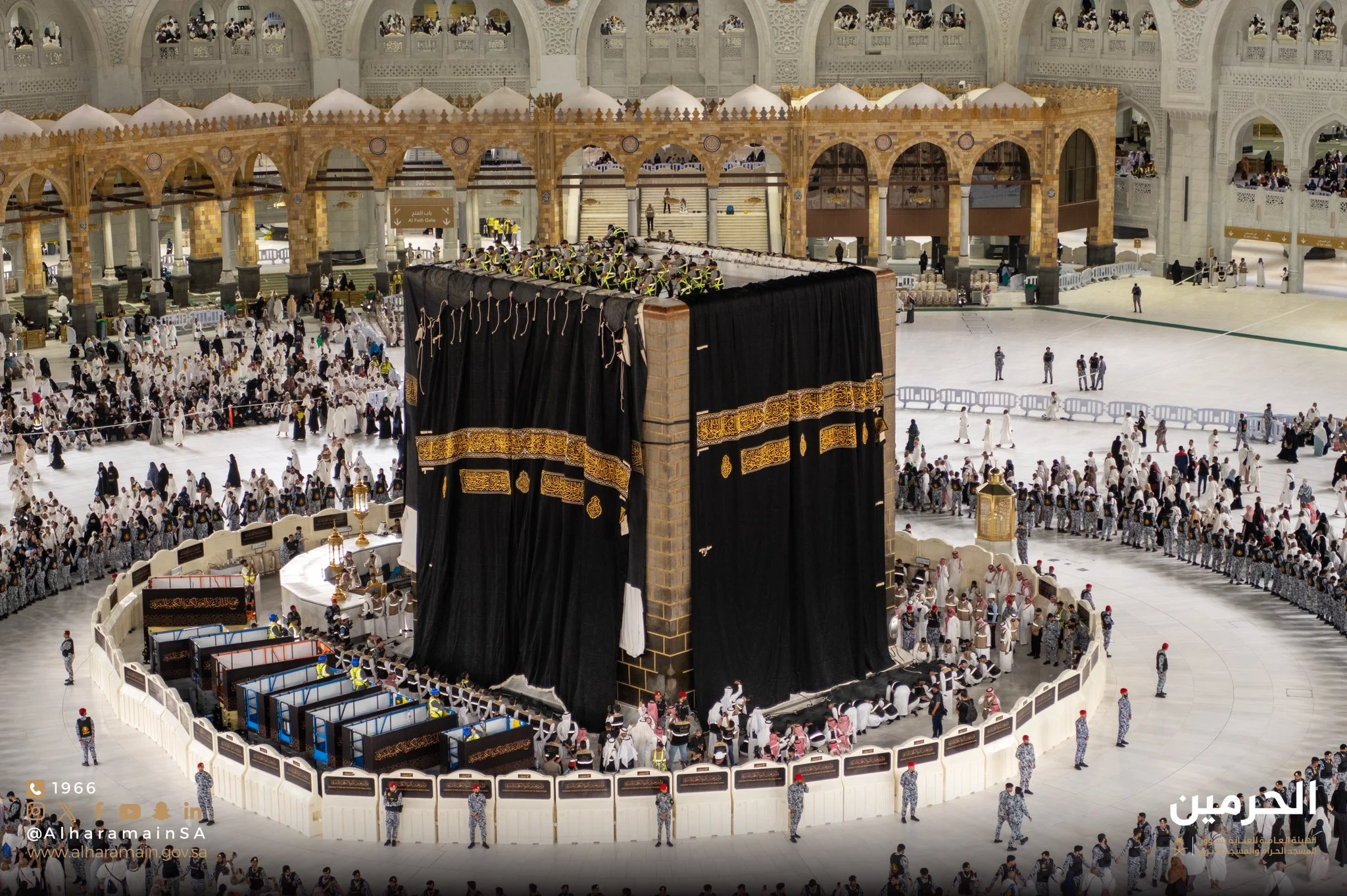
The Kingdom of Saudi Arabia, under the leadership of the Custodian of the Two Holy Mosques, King Salman bin Abdul Aziz Al Saud, may Allah protect him, has consistently prioritized the care of the Two Holy Mosques, their visitors, and the Noble Ka’bah in particular. It has provided the latest equipment and machinery for manufacturing and sewing the Kiswah to the highest standards.
One of the most significant advancements during this prosperous era is the introduction of the "Tajima" and "Jacquard" machines, which produce the Kiswah of the Noble Ka’bah, adorned with supplications, golden lanterns, and inscriptions. This process is carried out by a specialized technical team of trained and qualified national hands, using machines with over 9,000 silk threads. The modern TWESTING MACHINE works on the weft threads for the Ka’bah’s Kiswah in the automated weaving section, employing advanced technical methods. It is equipped with twelve heads, each winding a bobbin for a single weft.
Since the era of the founder, King Abdul Aziz Al Saud, may Allah have mercy on him, the production of the Ka’bah’s Kiswah has received great care and attention. A dedicated factory was established in the Ajyad neighborhood, opposite the Ministry of Finance in Makkah, in 1346 AH, marking the first Saudi-made Kiswah crafted in Makkah.
His sons continued this care and development, completing the first Kiswah in the new factory after three months, specifically in August 1962. It bore the inscription: “This Kiswah was made in Makkah and gifted to the Noble Ka’bah by the Custodian of the Two Holy Mosques, Saud bin Abdul Aziz Al Saud. May Allah accept it. Year 1381 AH.”
In 1962, King Saud bin Abdul Aziz ordered the establishment of the Kiswah factory and entrusted this task to his brother, King Faisal, who assigned the Minister of Hajj and Endowments, Hussein Arab, to select a building belonging to the Ministry of Finance in Jarwal.
This care continued through the reigns of King Faisal bin Abdul Aziz, King Khalid, and King Fahd, may Allah have mercy on them. In 1397 AH, the Kiswah factory was relocated to its new building in Umm al-Joud, equipped with the most advanced machinery, and it continues to produce the Kiswah in its finest form to this day.
The Custodian of the Two Holy Mosques, King Abdullah bin Abdul Aziz Al Saud, may Allah have mercy on him, approved the modernization and replacement of electronic systems, electrical devices, and mechanical equipment in the Kiswah factory to align with advanced systems, marking a significant developmental leap in the production of the Ka’bah’s Kiswah.
In honor of the founding king, the Custodian of the Two Holy Mosques, King Salman bin Abdul Aziz Al Saud, may Allah protect him, approved the renaming of the Kiswah factory to the King Abdul Aziz Complex for the Holy Ka’bah Kiswah on Tuesday, 13/8/1439 AH.
This reflects the Kingdom of Saudi Arabia’s enduring care for the Kiswah of the Noble Ka’bah since its founding, continuing into the prosperous era of the Custodian of the Two Holy Mosques, King Salman bin Abdul Aziz Al Saud, providing all technical capabilities and human resources to serve the House of Allah.